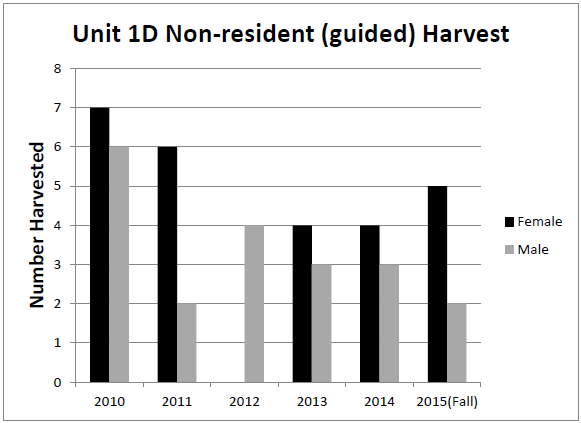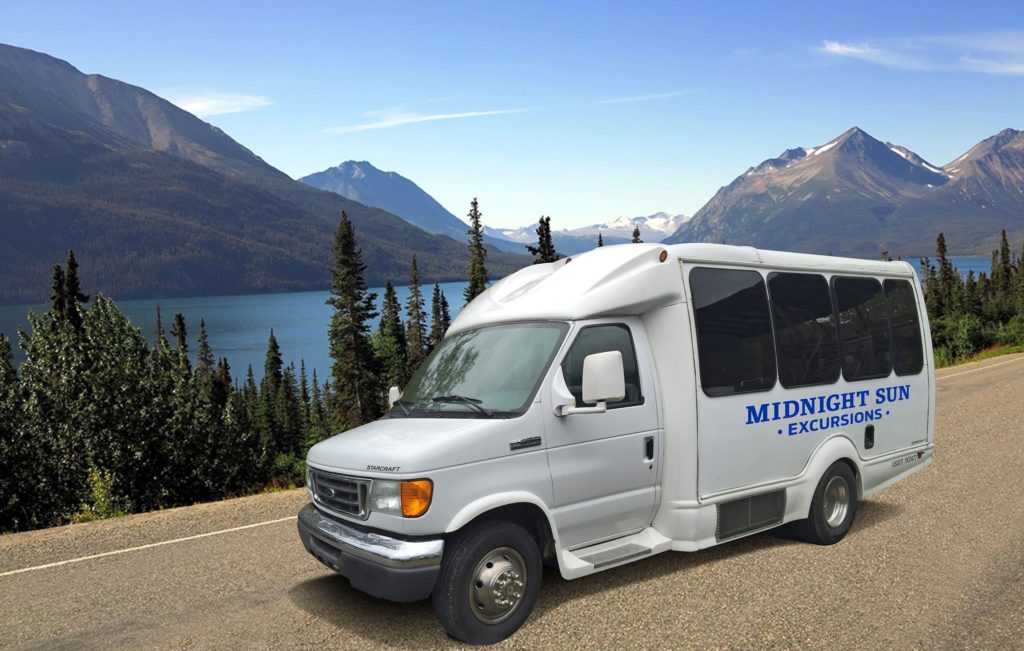
A female brown bear. (Alaska Department of Fish and Game)
State biologists are concerned about the high harvest rates of female brown bears in the Chilkat Valley. The numbers are especially high when it comes to the non-resident, guided harvest. But some local hunting guides say they can only do so much to stop clients from taking sows when there is no regulation against it.
“Before you shoot, take a closer look. Do you really want to shoot a three-or-four-year-old female grizzly about five feet long, weighing just a little more than you do? That’s what you’ve got in your sights.”
A video on the Alaska Department of Fish and Game website, called ‘Take a Closer Look’ educates hunters on how to distinguish between sows and boars, in order to protect female bears.
Fish and Game biologist Carl Koch spoke to the Upper Lynn Canal Fish and Game Advisory Committee Friday. He said the goal is to keep the harvest of female brown bears below 40 percent. But the numbers for the Chilkat Valley exceeded that threshold multiple times in the past five years. Last fall, 75 percent of bears harvested were sows. That could partly be due to the fact that it’s usually harder to identify males in the fall than in the spring.

Source: Alaska Department of Fish and Game
“Brown bears have slow reproduction, their cubs have low survival, so this has us – it’s definitely getting our attention,” said Koch. “At this point we’re concerned and we’re paying close attention to it.”
Koch says it’s hard to know if the high harvest of sows is significantly hurting the overall bear population. Unlike moose and mountain goats, Fish and Game can’t count bears using aerial surveys. And it’s costly to pay for a bear study. Koch says the best guess for the total population in the Chilkat Valley is about 350 bears.
Non-resident harvest appears to be a problem area. Fifty-four percent of the bears taken in the non-resident harvest between 2010 and 2014 were female. Non-residents need to hire hunting guides to legally harvest brown bear in the Chilkat Valley, Unit 1D.

Source: Alaska Department of Fish and Game
“It looks like the guides are the ones that need the education,” said advisory committee member Ryan Cook.
Larry Benda has worked as a hunting guide in Haines for 20 years. ‘Don’t shoot sows’ – that’s the advice Benda says he gives each client. But not everyone listens.
“[A client] can tell me, ‘you know what, we are on day number eight of 12-day hunt and I want to kill bear. We see a couple males, well I was waiting, I was hoping I would see bigger one but I don’t see one and I worry I will not harvest bear, I will kill that female.’ And I can’t stop him.”
Benda says he can’t stop him because it’s legal to harvest a sow without cubs.
Haines hunting guide Al Gilliam agrees – there’s only so much you can do as a guide.
“I end up getting hunters here that have been in other parts of the state. And they’ve spent huge amounts of money on a brown bear hunt,” Gilliam said. “And then they come here and they say ‘I want to shoot the first legal bear I see.’ And I hear that and it makes my stomach crawl. Because I’m afraid they’re gonna shoot a sow and there’s literally nothing I can do to prevent that.”

Source: Alaska Department of Fish and Game
Gilliam and Benda have different ideas about what Fish and Game should do to lower the harvest of sows. Benda says, make it illegal.
“It would make big difference if I would say, ‘Listen, it’s not legal to kill female because the regulations say you can kill male only.’ Then the regulations would work much better for everybody,” Benda said.
“No, because it’s too hard to tell the difference,” Gilliam said.
Gilliam says making it illegal to harvest any sow would result in punishing people for shooting a female they thought was a male. Instead, Gilliam thinks Fish and Game should take the same steps they recently decided to take for mountain goat hunting. To discourage the harvest of nanny goats, hunters in Unit 1D now have to take an educational quiz.
But at the advisory committee meeting, Haines resident Brian Clay spoke out against implementing any additional requirements.
“Putting out quizzes and tests for hunters to go shoot a brown bear – when I went a mile last year I counted 26 bears in an hour,” Clay said. “It seems like we don’t have a lack of bears.”
Right now, biologists say the harvest numbers aren’t worrying enough to implement new regulations. They plan to closely watch the results of this spring’s hunting season, which closes May 31. If hunters continue to take a high number of sows, Koch says they’ll need to address it, which may require more than an educational quiz.

Source: Alaska Department of Fish and Game









Trophy hunting guides can advertise that they guide clients on male bear hunts only. This would eliminate clients that want to shoot sows and damage the sustainability of the local brown bear population. It’s up to the Guide to maintain ethical standards regardless of whether it’s legal to shoot a sow or not.